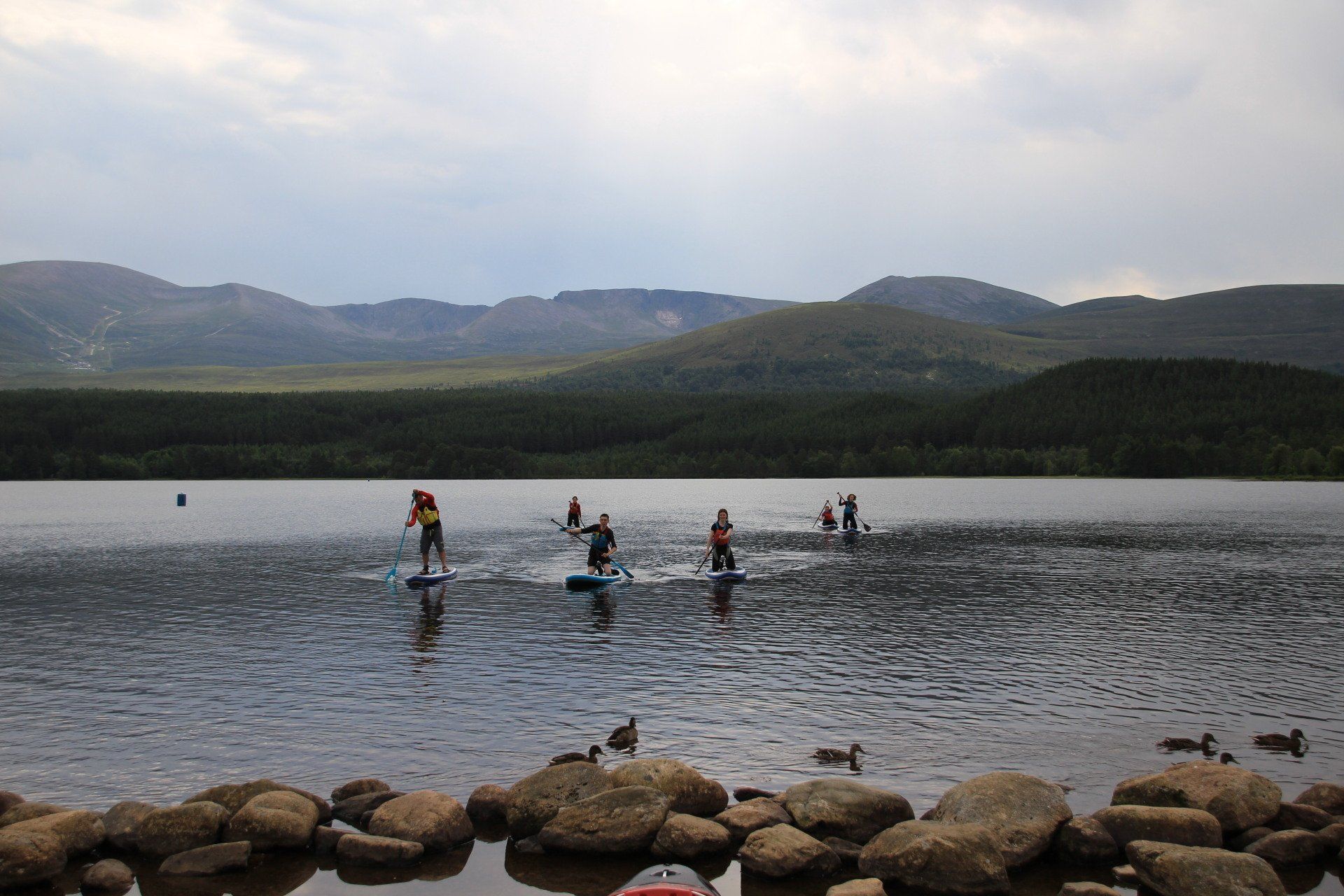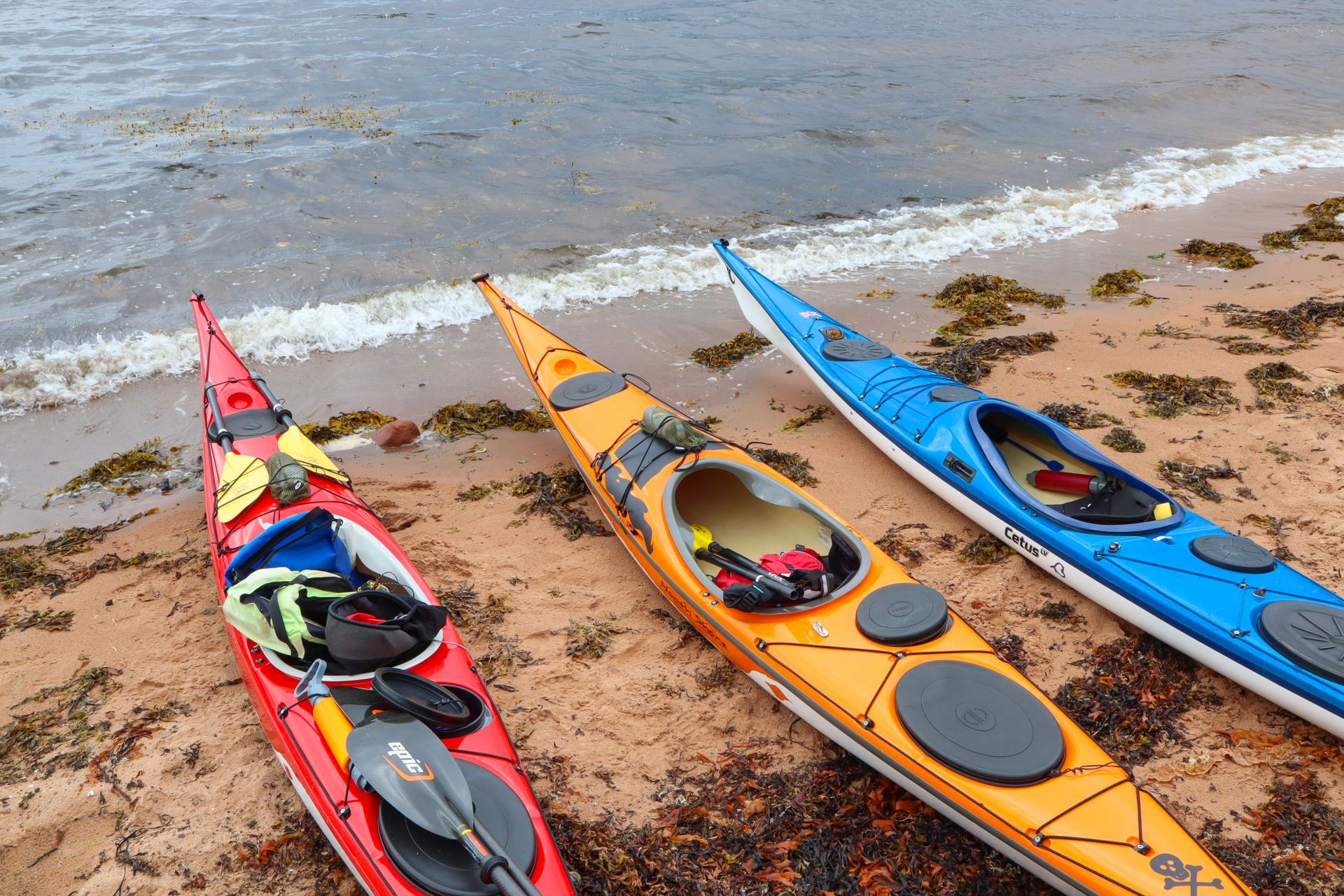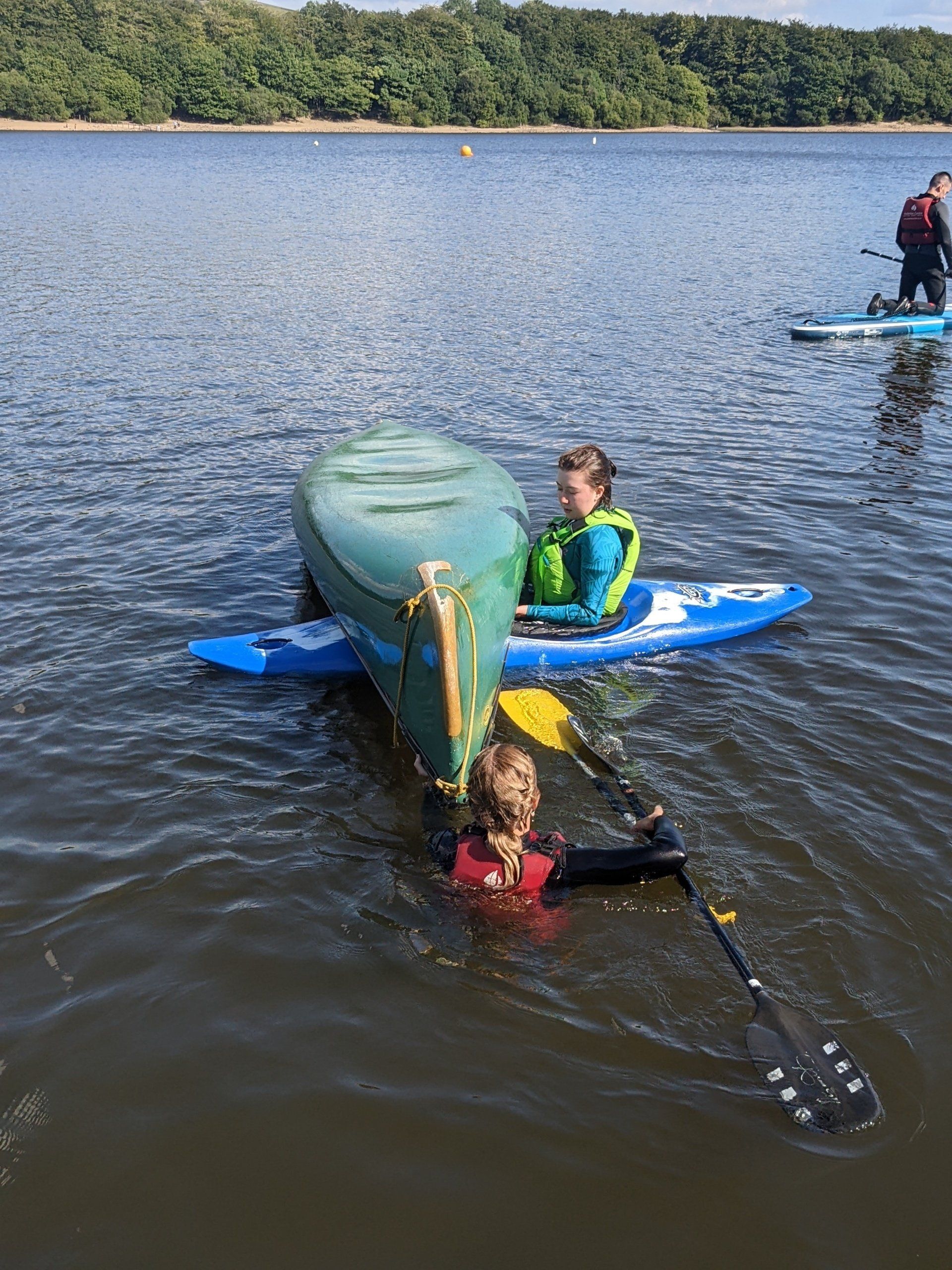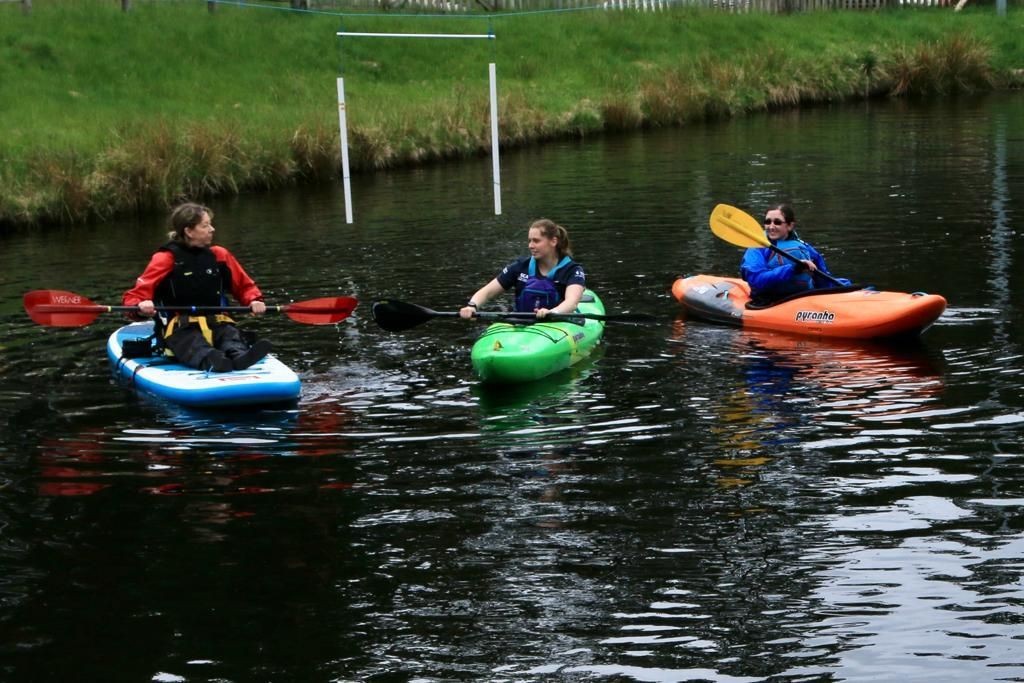Advice: Peeing & Paddling
Some advice for when nature calls on a paddling trip!
This was originally published in the April 2024 issue of 'Scottish Paddler', Paddle Scotland's magazine for members.
When you gotta go, you gotta go.
This article is for men and women, for paddlers, coaches and leaders. There are probably more tips that women will find useful - most women and girls would agree that it’s more hassle for them - but this is for all their friends, coaches and leaders too. Anyone who paddles with women plays a part in supporting an inclusive environment and removing the barriers.
We need to be proactive to ensure that everyone can ‘go’ when they need to. We don’t want anyone to be uncomfortable or distracted trying to hold it in, deliberately dehydrating to avoid the need to go, or being worried or stressed about it. These things all happen more often than you probably think.
Here are some tips to help make life easier when out for a paddle:
#1 Planning
It’s always good to go before getting on the water. Have a look at your journey before heading on the water - are there toilets near to where you are going? GSP toilets at the Tay, Knockando at the Spey, public toilets, local cafes etc. If there are places where toilets are available, use them as a stop off or as a group meeting venue. And if you are organising the paddle make sure you tell people where the toilets are if it’s an unfamiliar venue.
#2 Time
It's a common challenge for women to need a bit longer to go to the loo (whether it's walking further away to find privacy, taking longer to undress/redress, or because they have extra stuff to do if it is their period). Always allow everyone enough time and never restart until everyone is back together and ready.
“When leading groups I ensure there is always a relaxed approach to getting back on the water after the last person goes for a comfort break. I tell people this too, so that no one feels rushed or worries that they will miss out because we’ve started without them.”
“To avoid long walks to find privacy try to stop in a place where there is some form of geographical feature which can be used to pop behind.”
#3 Privacy
Choosing the ideal spot requires a bit of experience and a good eye. From a safeguarding perspective, it’s particularly important when there are young people around.
“Sometimes you need to be terribly indiscrete in the hope that everyone else will be terribly discrete, i.e look the other way.”
“I announce where I’m going so they can give me some space. Finding a rock/bush that’s say 20 metres away is much easier/quicker than trying to walk miles away from the group to get some privacy.”
“If you are paddling with people newer to the wild wee, they might need some tips on how to find a good spot. Stop in places with some cover, for example at the end of a beach, rather than in the middle where there is no cover. Talk about it.”
“This is more where my dry robe comes in handy - it covers me up!”
“As a coach/leader when we stop I tend to designate separate areas for the genders. Women to the left, men to the right.“
“A storm cag doubles as a miniature toilet tent. No one will be able to see anything even if they are looking, which they aren't. A spray deck covers everything at the front so it sometimes works better to pee facing the group rather than facing away.”
#4 Kit
There is nothing worse than trying to hold off going for a pee and then mid-trip having to get out and very quickly go find a suitable spot, unzip and pee. Depending on what you wear paddling it can be a very close call to get through the layers!
One of the top hints from the women who helped contribute to this article was about wearing the kit that enables you to easily remove layers to go to the toilet whilst not compromising on performance or comfort.
For some women it’s a dry suit option: drop seat, full leg zip or one with a men’s pee zip and a ‘she wee’.
“It was a game changer finding a dry suit with a drop seat to allow me to take a wee with ease during a river trip. Prior to this I got rather efficient at taking everything off to have a wee but now it's so much easier. I would highly recommend any women's specific dry suit with a drop seat. Staying hydrated during the day is so important. I can now drink my tea while I coach on a river trip and take a wee with ease.”
You can also get thermal trousers with matching pee zips to wear under your drysuit and help make it easier to get through the layers.
But the drysuit is expensive and not for everyone. Others suggest wearing separate cag and trousers, and separate top/bottom thermals or wetsuits. Avoiding salopettes, braces, onesies, long-john wetsuits, etc. - although it was amazing to hear how many women got their sewing machine out to modify their kit so they could make it work. Come on manufacturers, we shouldn’t have to do this!
#5 Weeing in your boat/wetsuit
Not ideal. Smelly and uncomfortable. But let’s be honest, how many of us have had no other option. It’s a longer crossing than expected, you can't get out of your boat quick enough, you’ve left it too long. Whilst this is a last resort, it happens to the best of us.
If you are in a wetsuit, a dunk in the water at the first safe opportunity might be an option to rinse. When you finish paddling, get changed and give your boat a good rinse out as soon as you can. Don’t tease others if you spot the telltale signs - they will be deeply embarrassed, maybe so much so that they won’t come back.
If we get things right, with good group support this should be avoidable in 99% of cases.
“Needing to go, I spotted a small rocky outcrop mid way across a crossing in my sea kayak and made a beeline for it. I got there and there was too much swell so I couldn't get out safely on my own. The rest of the group had gone on ahead and no one was around to help. You can guess the outcome - it wasn’t very nice. Feeling totally unsupported I never went paddling with that group again; I wonder if they knew why?”
“If I'm fully wetsuited up for a winter day of surfing or coaching on the beach, when I definitely need to be fully fastened in so as to be able to manage a rapid rescue if the need were to arise, there are times when I've had to ‘let it go’. At which point a quick but not particularly pleasant neck scoop and salt water flush, and as soon as I get home a barrel of warm water and Zoflora (far less chemically than Dettol after smell) all help reduce the famous piddly wetsuit odour.”
“I often intentionally wear a wetsuit so I can just jump in and wee whenever I need (make sure to at least flush out the legs)!”
#6 Where
Leave no Trace suggests that we should be 200 feet / 75 metres away from natural water courses and busier places (campsites, footpaths etc). We can pee straight into high volume rivers (it gets diluted) and into the sea (or on the shore below the high water mark).
#7 Loo roll
Probably more of a girl thing! Some are happy with those minor drips, others disgusted by the thought of being in damp pants. Leaving toilet paper as rubbish when we are out and about is not acceptable, but we need to support and educate those who may never have found themselves in this position.
“I carry a small amount of loo roll and a ziplock bag to ‘bag it and bin it’ and take it home.”
“I use a thin panty liner to soak up the drips.”
“Discovering period pants was a game changer for me; they soak up the drips and feel nice and dry.”
“I have a ‘pee rag’ (Kula cloth makes a specific antimicrobial one) - simply wipe and let the cloth dry naturally.”
#8 When
On average, most people need to pee between 4 to 10 times a day. However, there is a wide range of ‘normal’ and some people may need to go more or less frequently. It’s probably safe to assume that if you are paddling in a group situation, someone will probably need to go within a couple of hours of the last stop. So stop regularly and when you do assume that someone will probably need to go.
“When leading a group I usually suggest when we're in a good spot for a wee and make people aware of how long they can expect to be on the water. I'm also very open about when I need to go and share strategies so people can plan and not be embarrassed to be the one to mention it.”
#9 How
Technique - I suspect most of the guys reading this have figured this out! But for girls it's a bit different and there are more things to consider. If you need tips on different techniques check here for different squatting styles: exploringwild.com/ways-to-pee-outside-women
#10 Talk about it
Even people who would be comfortable going for a pee outdoors with friends and family may feel inhibited about saying (or doing) anything when in unfamiliar company or a situation where someone else is 'in charge'.
“I try to help with this by being relaxed myself, by talking about it, making it clear when facilities will and won't be available, and what the alternatives are. I try to make sure that people feel comfortable to say that they need to go, and I try to be helpful with any necessary suggestions or advice, using my knowledge of where we are and the best options available. I also make it clear that I won't introduce or coach things while they are away, unless I know I can make sure they are given the same input and opportunities on rejoining the group.”
“When I first started paddling over 20 years ago the worst thing about the day was peeing. It was the torture of getting undressed out of the kit I had. BA and basic cag off, then trying to peel myself out of my wetsuit. Quick check - is your safe spot still actually safe? Finding a place to hover that doesn’t involve a nettle - now how much better do I feel. The ha-pee-ness is short lived however as I have to get dressed again! I'm freezing cold by this point and start the flexibility test involved to contort myself back into my clothes. 20 minutes later I walk back to the rest of my group with mixed feelings. Yes I am relieved - no more pee anxiety - but now I am freezing cold. Oh and so is everyone else. Shouting at me, why have I taken so long!”
“With a group of young people new to peeing outdoors, I'm really straightforward about it. If you don't need to pee all day, you haven't drunk enough and your body won't be working as well as it could. Make sure you help yourself have a good day. I try to create some camaraderie and shared experience between the girls. Yup, peeing outdoors can be a hassle and a bit tricky at first but who can find the pee spot with the best view? If you are worried about others coming by, take a friend and have them stand guard nearby. Each group needs a different approach but keeping it out in the open is usually best.”
“As a woman in my late fifties who began sea kayaking relatively recently, one of the biggest challenges I came across was how peeing was going to be accommodated into my paddling day. I was somewhat horrified when I asked other female paddlers on some early paddles how they had peed during the day to receive the response ‘I haven’t drunk much since last night and have held it in’. My first response was one of awe at such hydration and bladder control, the second was one of horror at the potential physiological impact such action is likely to have on the body and hence the ability to paddle effectively and safely.
As I wanted both to continue to paddle and to hydrate in a normal and healthy way, I started to look at kit that would accommodate this. Then the frustration really started. As I trawled the internet I came across the phrase ‘relief zip’ a thousand times - only relevant for half of us. Following my ‘make do and mend’ approach I now have kit that sort-of works yet none of it is optimal. If we want women to start and continue paddling, we need to actively consider the peeing issue. We need female-specific kit, not poorly adjusted men’s kit, and we need coaches and leaders to have this on their list when planning a trip. This is such an important starting point towards making paddlesport more equitable.”
Photo credit: Rachel Hannan, looking north on Loch Lomond
HIGHLIGHTED EVENTS
VIEW MORE